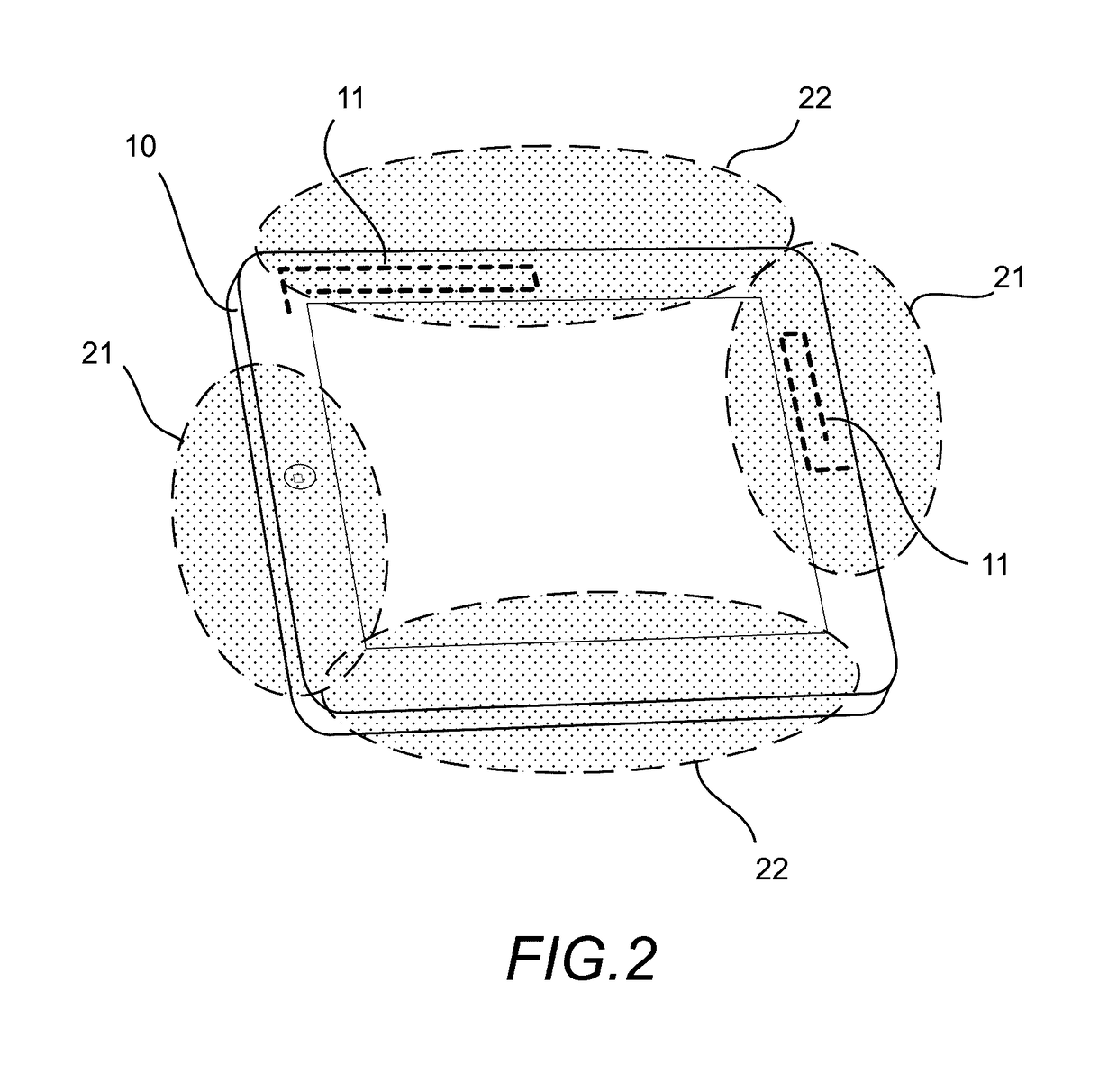SAR reduction architecture and technique for wireless devices
a technology of sar reduction and wireless devices, applied in the field of wireless communication, can solve the problems of reducing communication link quality, unable to meet requirements, and reducing transmit power,
- Summary
- Abstract
- Description
- Claims
- Application Information
AI Technical Summary
Benefits of technology
Problems solved by technology
Method used
Image
Examples
Embodiment Construction
[0033]Antennas of a tablet PC are often covered by a user's hands or body, presenting a challenge to maintain efficiency and reduce SAR when the tablet PC is in close proximity to the user. FIG. 1 illustrates a Tablet PC 10 with embedded antennas 11. A base terminal 12 is shown and one or both antennas in the Tablet are cellular antennas that transmit and receive RF signals from the base terminal.
[0034]FIG. 2 illustrates typical regions on a Tablet PC where hand loading and body loading from the user occurs. Hand loading regions 21 are shown positioned on the right and left sides of the tablet PC 10; and body loading regions 22 are shown along the top and bottom sides of the tablet PC 10. Antennas 11 are shown positioned within the tablet PC along various sides thereof where hand and body loading tend to occur. The hand or body loading degrades antenna performance, with the result being reduced communication link performance. A portion of the radiated power is absorbed into the body...
PUM
 Login to View More
Login to View More Abstract
Description
Claims
Application Information
 Login to View More
Login to View More - R&D
- Intellectual Property
- Life Sciences
- Materials
- Tech Scout
- Unparalleled Data Quality
- Higher Quality Content
- 60% Fewer Hallucinations
Browse by: Latest US Patents, China's latest patents, Technical Efficacy Thesaurus, Application Domain, Technology Topic, Popular Technical Reports.
© 2025 PatSnap. All rights reserved.Legal|Privacy policy|Modern Slavery Act Transparency Statement|Sitemap|About US| Contact US: help@patsnap.com



